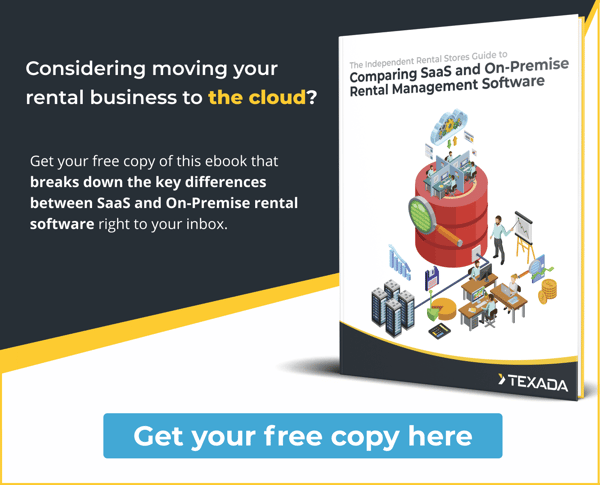What is Field Service Management and how does it apply to equipment rental industry?
Rental companies track equipment maintenance in different ways. Some still use pen and paper, email, phone calls, text messages, spreadsheets, or homegrown systems. Others have tapped into modern technologies to digitize their daily service workflows.
Within rental, service and maintenance responsibilities vary from shop to shop. Many have a team of mechanics that service their assets. Others outsource their maintenance and repairs to a 3rd party.
Solid service work can go unnoticed. Sub-par service can be detrimental to repeat or referral business, as well as shorten the asset lifecycle. Your service team is an extension of the entire operation and deserve to be armed with the tools to succeed. They’re the face of your company when they’re on the road, so keeping them motivated is key.
Allowing small issues to snowball can significantly impact your company’s bottom line:
- Misplaced work orders
- Unavailable or delayed parts
- Sub-optimal routes for drivers
- Documenting asset condition
- Digital customer sign-off
- Inaccurate labor hours
- Delayed invoicing
- And more...
Companies that capitalize on their service and maintenance work understand it can be another revenue stream for their business. The most crucial factor is making sure the equipment is in peak condition so it can be rented out or sold.
How the information is being transferred across the organization is a critical component to making sure the service department is profitable and positively representing your brand.
What types of applications are there to manage this part of your rental business? What steps can you take to centralize data and enhance productivity? What should you look for when shopping for solutions?
FSM solutions
There are hundreds of field service management (FSM), work order management software (WOMS), and computerized maintenance management software (CMMS) solutions in the marketplace today.
Most FSM/WOMS/CMMS share similar core functionality and have configuration abilities that cater to unique workflows. All will erase redundancies and errors that come with manual data entry. They are designed to record and track asset history, reduce downtime, increase first-time fix rates, automate maintenance schedules and enhance your team’s productivity.
Finding the correct solution will depend on the requirements you’re looking for. There are “all-in-one” type systems, called “ERP’s”, that aggregate data across the organization and end the need for multiple software programs. One of the many benefits of an ERP is that all data lives under one roof. They handle every aspect of your business and reduce the amount of time needed for manual tasks like creating work orders. They will also automate aspects like inventory management, so if a part is low in quantity, it can be re-ordered.
There is also the option to integrate a service solution to your current rental management platform. Many systems offer open APIs that allow the programs to “talk” to each other and pass information.
Each will have a dispatch component and a mobile app to connect teams in the back office and the field. The application will assist in a smooth transition from one step to the next until the work order is completed and the invoice is fulfilled. The ability to customize workflows will make sure your team only sees and does what they need to.
The paper exodus
Pen and paper, whiteboards and Excel spreadsheets have been industry staples for years. While they are cost-efficient, they have serious drawbacks to a growing organization. Some of them are:
- Paper can be lost or damaged
- Hard to find or locate specific records
- Inaccurate information from manual entry
- Slow response times
- Lack of asset history
- Preparation for audits
- Little to no reporting
- Required to be in the physical location of
- No way to trigger preventive maintenance
- And more…
These mistakes lead to lost revenue, unhappy customers and can hinder growth. It’s easy to see why older processes are being replaced with cloud-based applications.
Digital solutions come at a cost. They require upfront fees, implementation, training and team adoption. It’s no small feat to take the plunge. However, once they are in place, the results will follow shortly after.
Critical information is passed seamlessly throughout the organization.
Anyone with an internet connection will be able to create, assign, track and analyze work orders in real-time. Field workers will have access to their tasks, asset histories, part inventory, documents and images of the asset. The back-office will be able to run reports on metrics related to cost and efficiency that are crucial to the business.
The equipment rental shop as a whole will benefit from streamlined processes and enhanced productivity.
Equipment rental specific
In today’s software landscape, there are plenty of options that cater only to the rental industry. An HVAC technician’s day will look different than a mechanic’s at an equipment rental shop.
Start by writing down what your ideal looks like. This will help determine if there is room to optimize workflows in your service and maintenance departments. When you speak with vendors, explain the pain points your organization is facing and see a demo of the product.
You'll know if it can have a positive impact on your team's day-to-day.
Years back, a rental transaction would involve a phone call that would lead to a paper work order and a mailed invoice once it reached fulfillment.
Now, it begins with an online reservation. This triggers a delivery ticket in the system, which is then assigned to a driver. The driver completes the work order, collects an electronic signature from the customer, triggers an invoice and is on to the next job.


